In online ed, content is no longer king—cohorts are
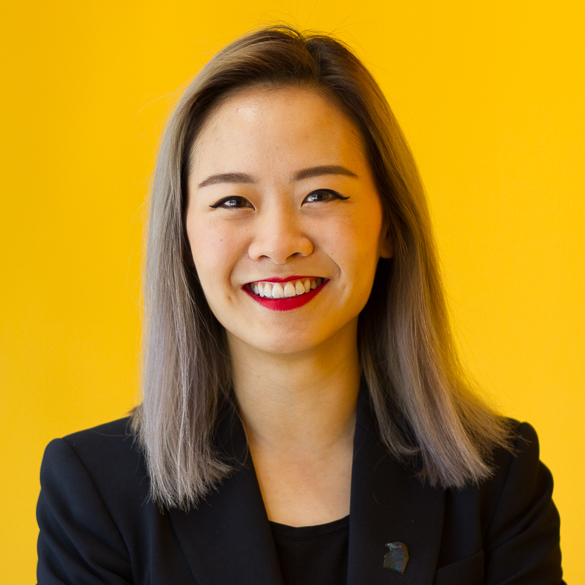
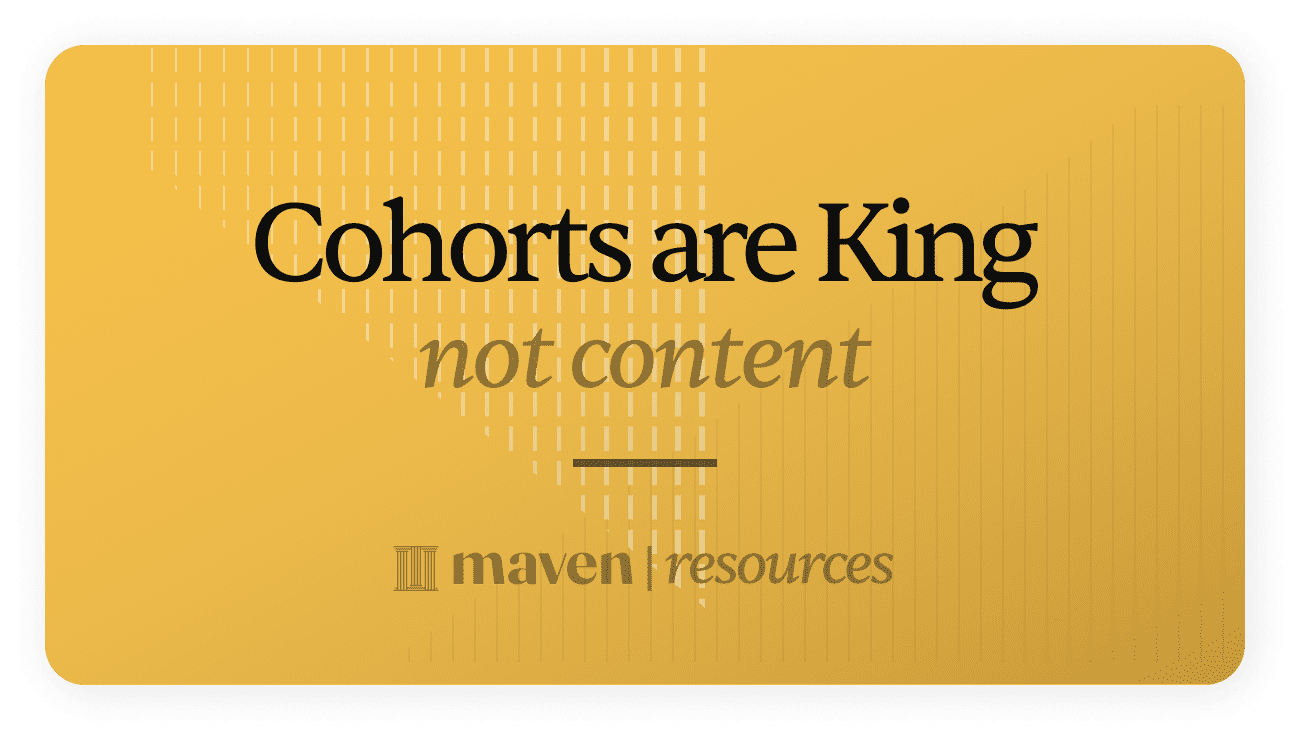
MOOCs vs. CBCs: The shift from content to communities
- MOOCs are asynchronous and self-paced. In decades of research about distraction, focus, and motivation — let’s be honest, everyone has procrastinated until the last minute at some point — we’ve learned that tasks without a set timeline often lose out to those that are more urgent. Because you can watch and learn at any time with MOOCs, there’s no built-in urgency. This also has longer-term attrition implications: One recent study by researchers at MIT found that online courses not only had a dropout rate of about 96 percent over five years, on average, but that the vast majority of MOOC learners never returned after their first year. (In contrast, in 2015 when marketing expert Seth Godin and I co-founded the altMBA, a cohort-based course that distilled the workplace so-called “soft skills” traditionally taught in a two-year MBA program into a four-week class, we saw a 96 percent completion rate.)
- MOOCs’ low (or no) cost colors the perception of quality. While affordable pricing is an undeniable benefit and important for accessibility, the low cost of MOOCs and lack of quality filters can also have a detrimental impact. The prices of most MOOCs are low enough for some to be considered an impulse purchase, which has led to brand degradation and turned off some creators. Meanwhile, others argue we’ve reached MOOC saturation — $18.99 to learn animal telepathy! — leaving an impression that’s the opposite of exclusivity and desirability, especially given the aggressive marketing strategy often reinforces that perception. For instance, I’ve heard creators say, “I don’t want to be one of those people who tries to spam everyone with Facebook ads to sell their $97 video course.”
- MOOCs convey “knowledge transfer,” but not necessarily higher-order skills. Since MOOC content is pre-recorded, it’s one-directional, meaning there’s no opportunity to ask questions in real time. This hinders the format from teaching anything that requires more feedback, discussion, or hands-on practice. Thus, MOOCs are great for subjects that are primarily “knowledge transfer,” such as how to sort data in Excel or other such skills. But they’re not great for higher-order skills—those that require analysis, evaluation, synthesis, judgment, and creativity. Continuing with the Excel example, a higher-order version might involve how to segment the data strategically to look for patterns and arrive at a recommendation.
The case for cohort-based courses
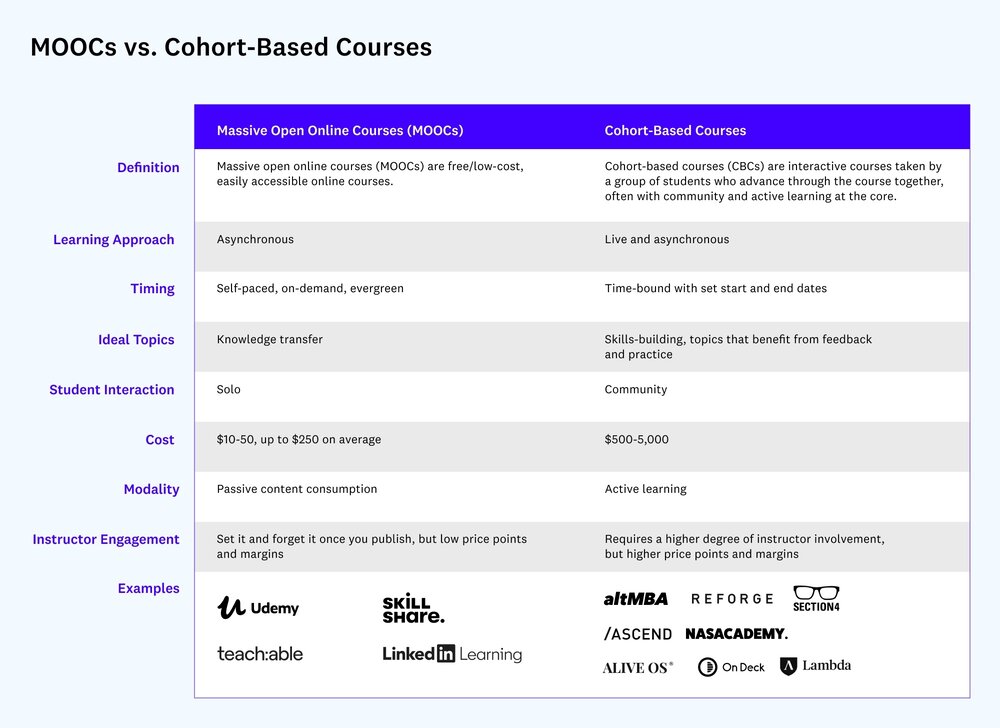
CBCs focus on active, hands-on learning
In medical school, third- and fourth-year students typically do rotations at hospitals. Instead of reading about skin conditions or diseases, students inspect a live patient or review a case study to practice diagnosing it. In a similar manner, cohort-based courses offer students ways to learn that are active and hands-on.
Instead of watching a course about sales strategy, students have to actually make the sale and report back to their peers. Instead of watching videos about color theory in graphic design, students design a flyer and critique each other’s work. Instead of watching videos about how bonsai trees grow, students actually grow their own bonsai.
This approach has been shown to be effective: a 2019 Harvard study, for example, found that students in an introductory physics class scored higher on tests following active learning sessions. Students have to put in more effort through this format; they’ll stumble and make mistakes. While this is inarguably harder than listening to a charismatic “sage on stage” lecturer — where some students in the same study even perceived themselves to be retaining more knowledge when taught by “superstar lecturers” than they actually were — the research showed students actually learned more from the hands-on experience.
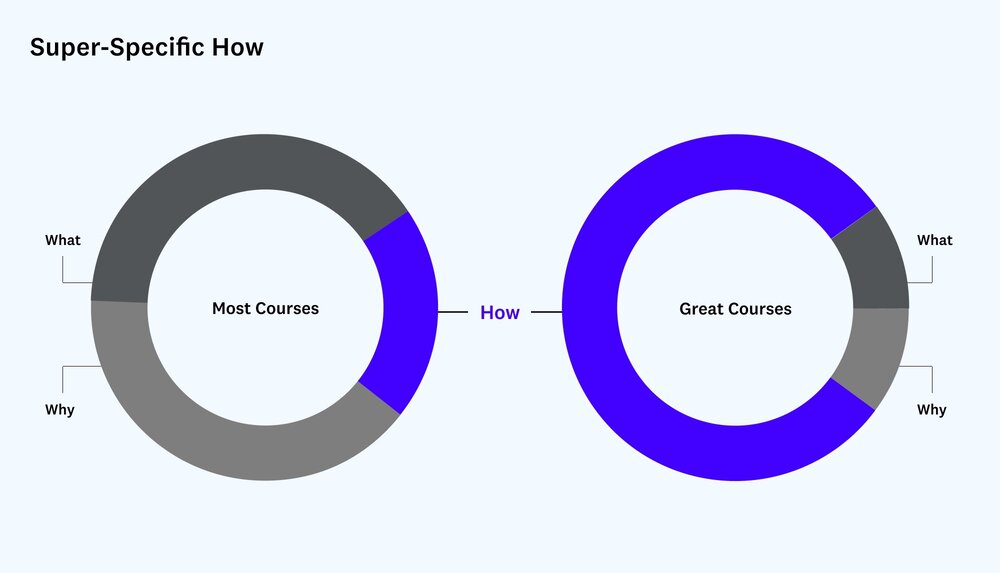
Live, bi-directional learning leads to more accountability
The forced scarcity of fixed start and end dates adds a sense of urgency and focus. Cohort-based courses also offer live lectures with instructors, active participation in conversations, applied learning exercises, and breakout groups.
In his book Cooperative Learning, the clinical psychologist and professor of psychology Spencer Kagan argues that the single most powerful approach to comprehension and retention is interactive processing, which occurs when “students engage in interaction with partners or teammates over the content.” Part of the reason that this approach is so powerful is that classroom discussions and debates produce new ideas and points of view; that back-and-forth holds student attention in a way that no lecture can.
Another reason cohort-based courses can have more accountability is that they are bi-directional, as opposed to one-way, meaning there’s an exchange of knowledge between the instructor and students, as well as students with fellow students. It’s a dialogue, not a static lecture. While some MOOCs may also offer this as a feature, it’s often secondary, rather than a core feature as it is in cohort-based courses.
This exchange also forces the instructor to be more accountable. As I’ve previously written, when you have nowhere to hide, you’re forced to show up to do the work. Cohort-based courses incentivize instructors to make their material more actionable for students. This, in turn, can lead to higher-quality educational experiences.
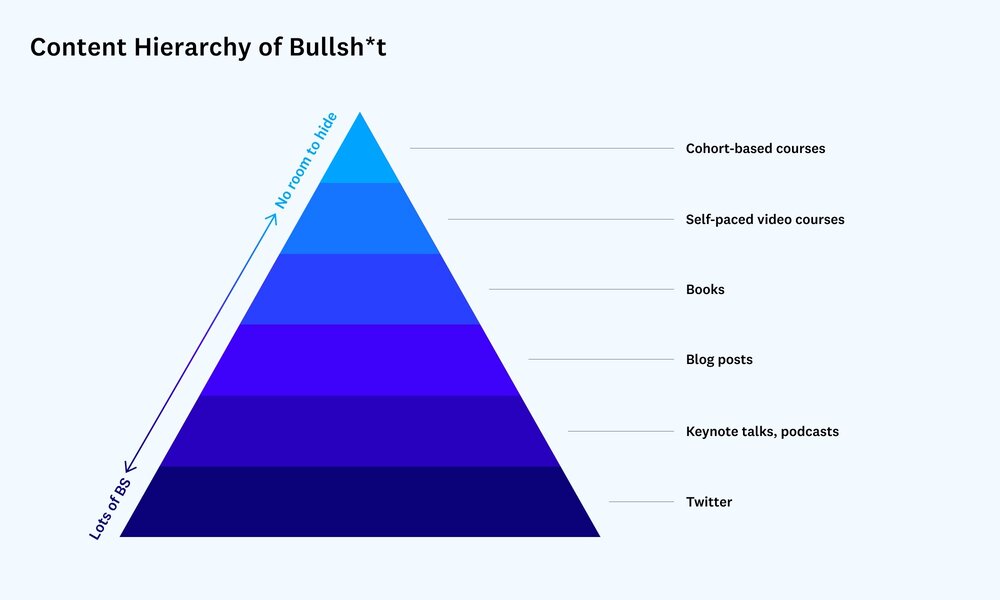
Community building improves learning outcomes through social features
Cohort-based courses center around a small to midsize community of peers, often 100 or so students per cohort. This group of people sharing the experience challenges students, motivates them, and leads to an overall emphasis on community and the student experience. MOOCs, on the other hand, often enroll thousands of students per course en masse, with limited to no interaction among fellow students (or only tacked on, optionally).
Research has borne out the effects of collaboration. The founding director emeritus of the MIT Teaching & Learning Laboratory, Dr. Lori Breslow, found that edX students who collaborated with a fellow student in completing course material scored nearly 3 points higher, on average, than those working solo. Norman Triplett, who published what many consider one of the early experiments in social psychology, found that cyclists performed better when around others, concluding that even the “bodily presence of another contestant participating simultaneously in the race serves to liberate latent energy not ordinarily available.” (Triplett completed his study 100 years ago; we can see the evidence in the popularity of Peloton’s social-exercise model today.) Keith Humphreys, a Stanford professor of psychiatry and behavioral sciences who studied Alcoholics Anonymous, found that the group program was more effective at helping people maintain sobriety than therapy — which he attributed to the social interaction and collective emotional support. Social interaction helps students achieve their learning goals, too.
When designing cohort-based courses, I also deeply researched institutions outside education — the military, dance-a-thons, Crossfit, and even cults — to understand the motivation of groups. All of these were “sticky” for their participants (for better or worse). But where most traditional education forces students to learn, it’s clear that continuing education and adult learning must be compelling and carrot-driven, not stick-driven.
There’s an elephant in the room, though: Why pay $750 to $5,000 for a cohort-based course when you can take a MOOC for $10 to 50?
Cohort-based courses self-select for learners who are willing to (and can) pay a premium for the perceived quality of content and follow-through. Most learners likely need the accountability and urgency that comes from the time constraints of a live course (with a clear beginning and end date), and from learning with a peer group. When Harvard famously transitioned its case-method courses online and incorporated peer collaboration in 2014, its completion rate rose to 85 percent, while most MOOCs at the time were experiencing single-digit completion rates. At Juno School, a cohort-based coding boot camp, data from 116 students who graduated in the first half of 2020 showed an employment rate of 74.1 percent within 9 months of graduation.
Cohort-based courses could fulfill the promise of online education, particularly as students continue to support each other after they complete the courses — and as the cohort forms a tight, internet-native alumni network.
A new model for creator monetization
Today, there are thousands of experts with valuable knowledge to share, but they aren’t conventional instructors. They come in all shapes and sizes, from specific subject-matter experts and operators — like Li Jin, who wrote about the Passion Economy for a16z and now runs a solo VC firm; or “knowledge” influencers like Khe He, a former Wall Street analyst who makes a living teaching a productivity course; or full-time operators like Noam Segal, a director of user research at Wealthfront who runs his course on UX fundamentals as a side gig. There are also solopreneurs like Tara Reed, who teaches a cohort-based course called Apps Without Code, along with many others.
The reality for most creators, though, is that monetizing their expertise is really hard, especially if they don’t have existing followings or networks.
First, traditional social platforms — Instagram, TikTok, Twitter — create a division between the activities intended to monetize and those meant for community building. Creators give away valuable content, but most don’t have the volume needed to make a living from advertising alone.
In fact, monetizing all of this requires volume. The idea of 1,000 true fans has been the holy grail because most creators haven’t achieved it yet. Research shows even YouTubers with over 1 million monthly viewers earn less than $17,000 a year. This means content creators often have to monetize via other means such as brand partnerships or low-margin merchandise — activities that often detract from community building.
Cohort-based courses provide a compelling way to monetize their expertise directly — and without requiring volume. It may therefore be the next phase of creator monetization, not just for classic educators, as more “knowledge” influencers run cohort-based courses. Cohort-based learning opens up a new quadrant of creator monetization:
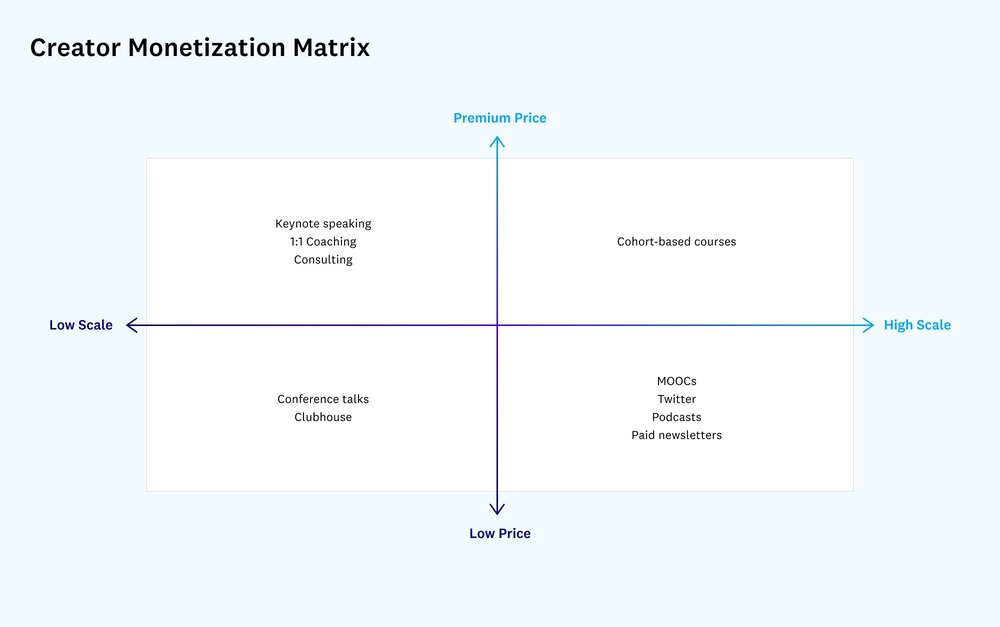
Instructors can make a healthy amount of money
- David Perell, the creator of Write of Passage, is a 20-something without formal training who teaches a cohort-based writing course twice a year and makes seven figures in revenue.
- Joe Hudson is an executive coach who taught his first cohort because his in-person coaching business dried up during COVID-19. He built his course in six weeks and earned $200,000 in his first cohort.
- Ali Abdaal is an influencer who teaches a cohort-based course about becoming a YouTuber — he made $1.5 million in revenue within nine months of launching his course.
Creators get more leverage with a productized offering
Both have said their initial interest in doing a cohort-based course was to provide more leverage for their time and to build an asset they can re-use for years. Creators don’t need to develop a course from scratch every time they run a cohort. And the effort to create a cohort-based course is front-loaded: 80 percent of the effort is in building the course, and 20 percent can be in running or updating the course in future cohorts. Since launching his first cohort in late January 2021, Pompliano has completed three cohorts in four months — and was able to do so because these courses, in a way, gave him back time.
Consumers get more payoff, creators get higher monetization potential and scalability
Cohort-based courses are still a nascent category. As in any popular trend, we’ll likely see prominent failures, too — but as the types of courses offered evolve, the definition of cohort-based courses will evolve, as well.
If a course has pre-recorded lectures and an ongoing community that meets for Q&A and monthly live calls, is it a course or a community? Similarly, the lines may blur between an event series, a webinar, or even just a networking event vs a course. What fundamentally matters, though, are student engagement and learning outcomes, no matter how they evolve. As cohort-based courses — the mix of live instruction, cohorts of peers, community, accountability, and hands-on active learning — challenge long-held beliefs in traditional online education, they will spark new opportunities for learners and creators alike, redefining what success looks like in online learning.
Related Courses
Consumer Subscription Growth
Build and execute proven AI-powered playbooks to accelerate the growth of your subscription business. 🔥 Featured in Lenny's Newsletter
The Art, Science & Business of Community
You’ll learn the psychology of why people gather, and get tactical playbooks for ideation, design, member engagement, and creating impact.
Attention Reset for Peak Performance
Life is the sum total of what you pay attention to. Don't let algorithms dictate what you focus on. Transform your digital habits for good.
Designing Your Freelance Business
Learn how to start and sustain a successful and fulfilling freelance practice.
Content Theory
The Science, Psychology, and Philosophy of High-Peforming Content Programs
Organic B2C Growth for Startup Founders and Marketing Professionals
Learn how to think like a scrappy growth leader and to apply the PR and a/b testing playbooks that worked in the early days of Duolingo.